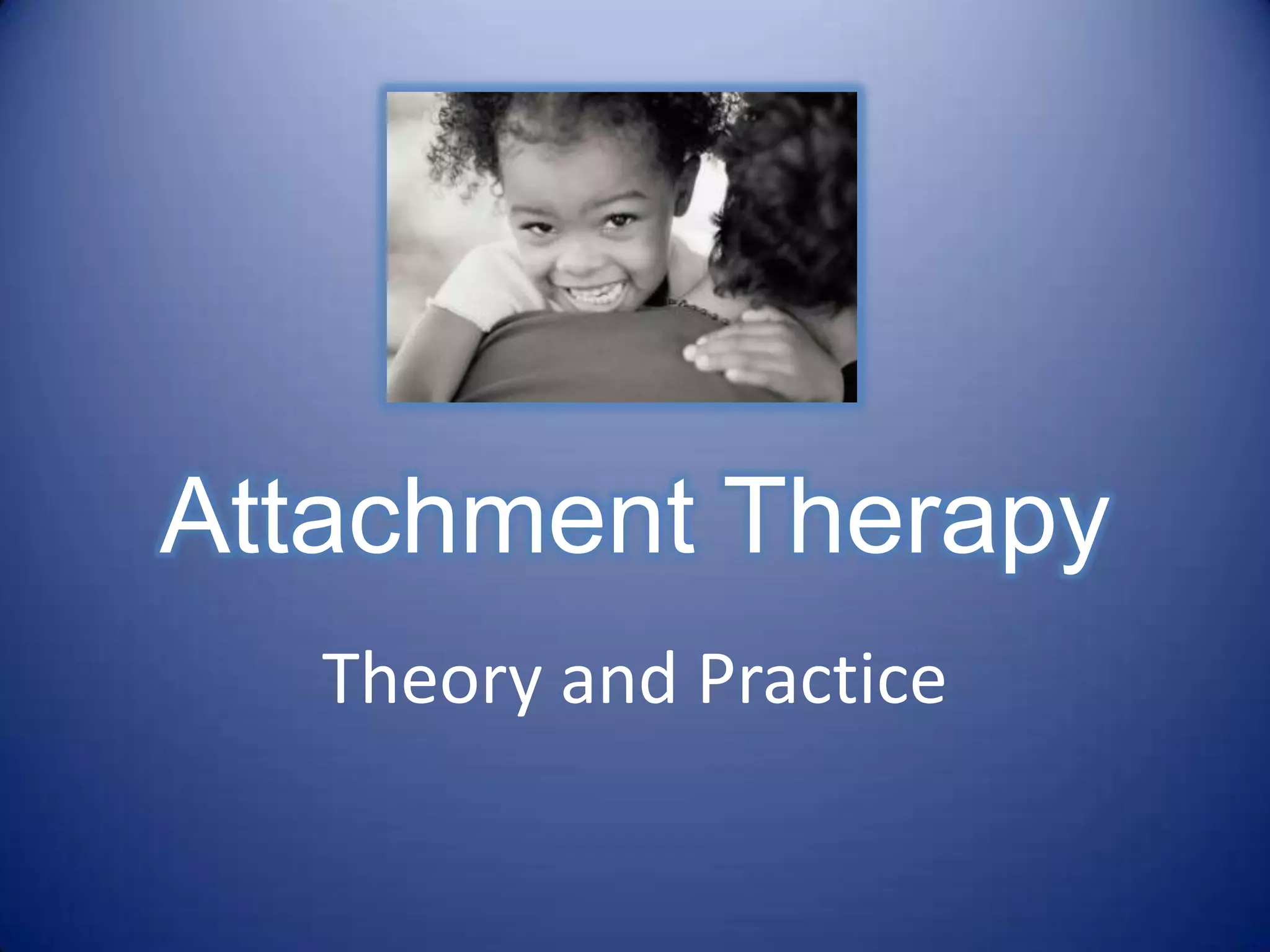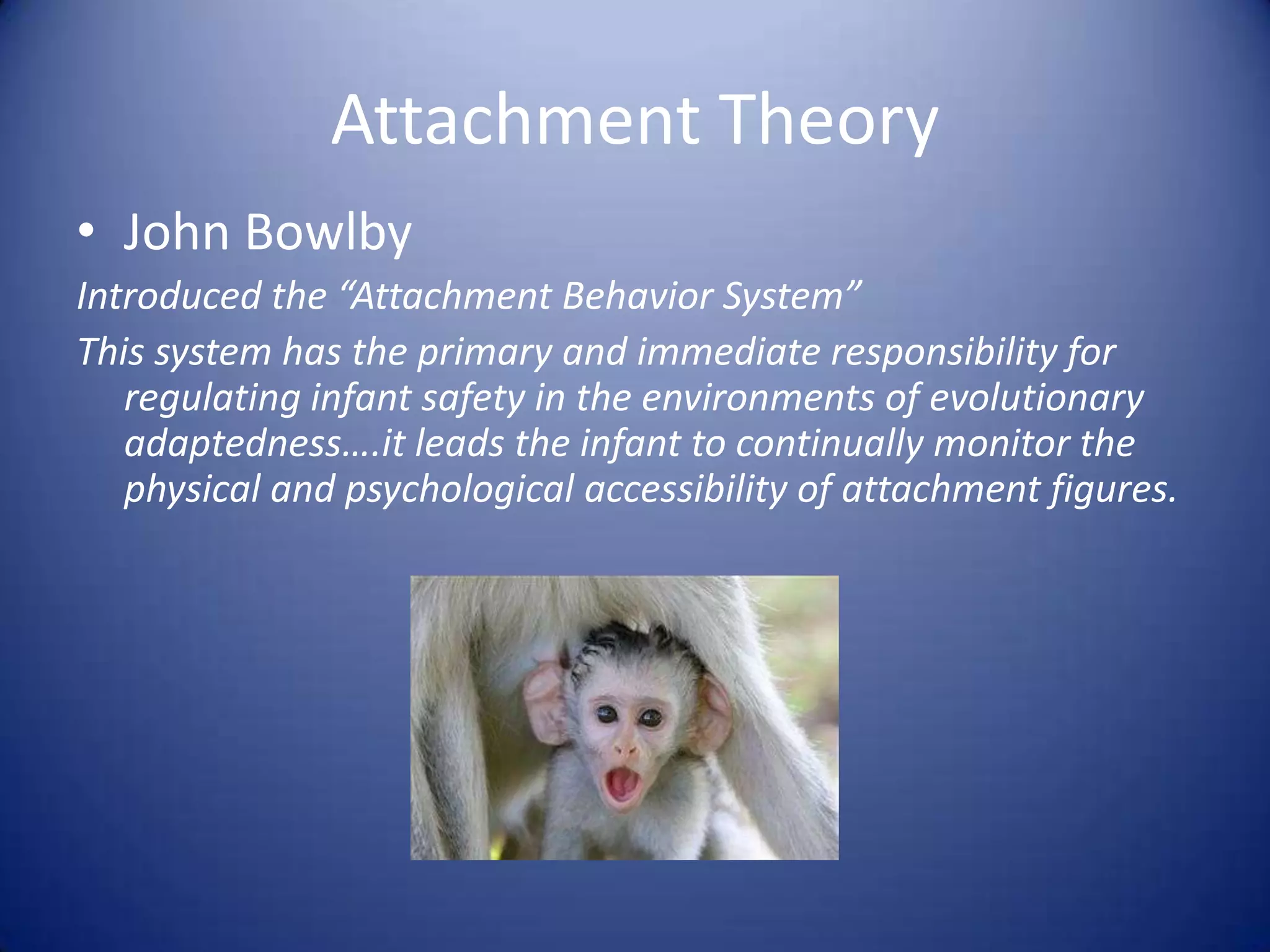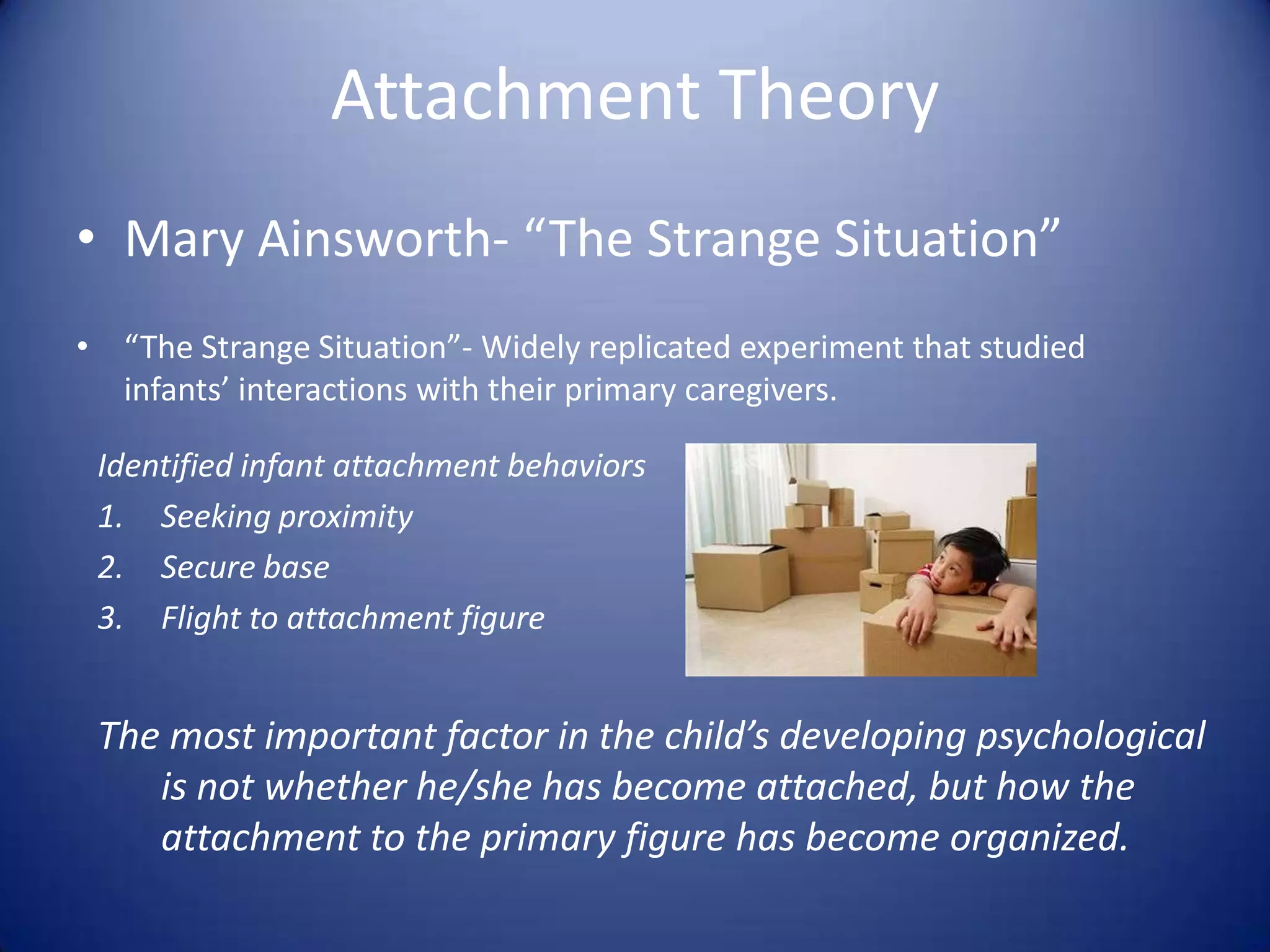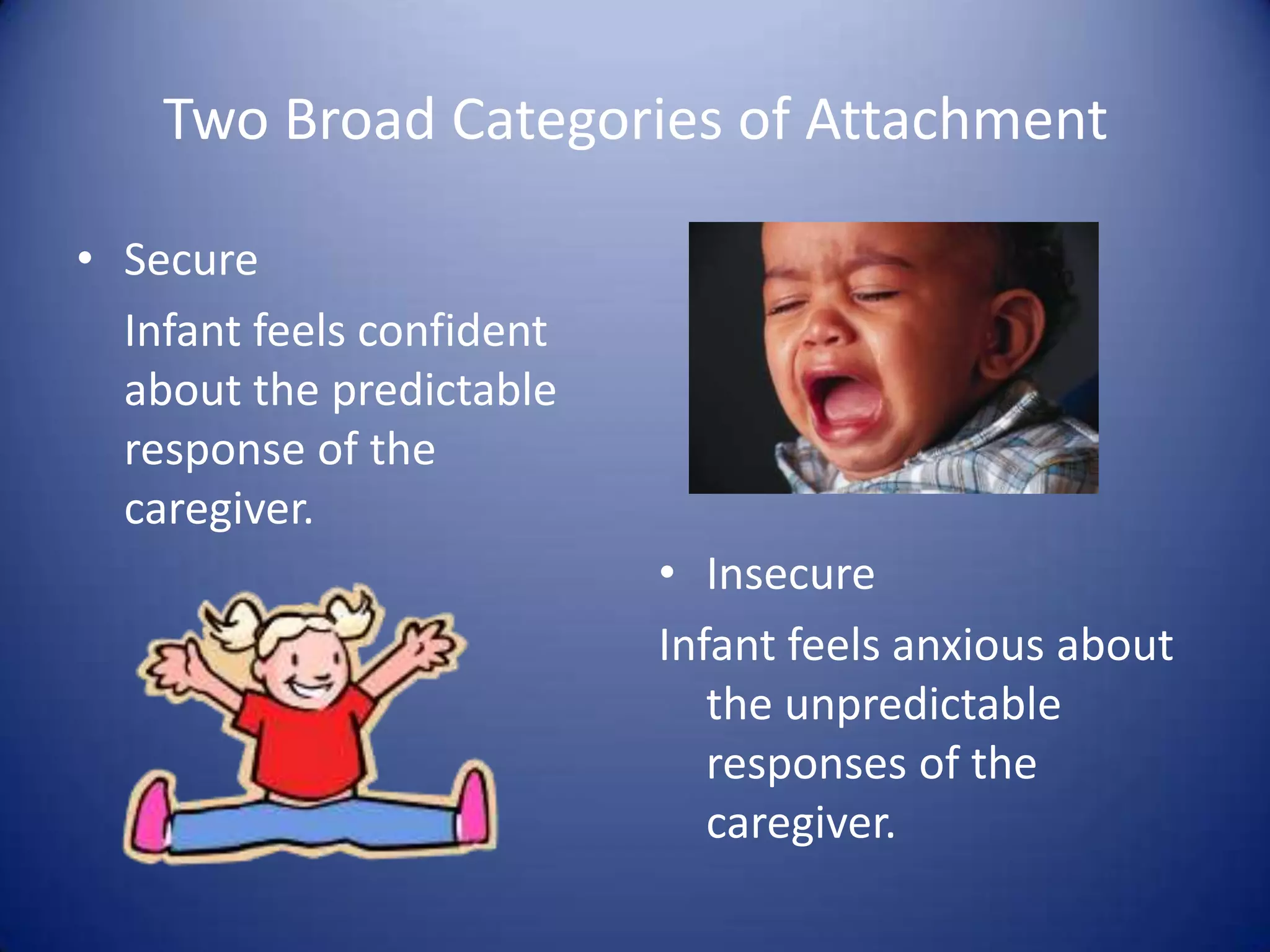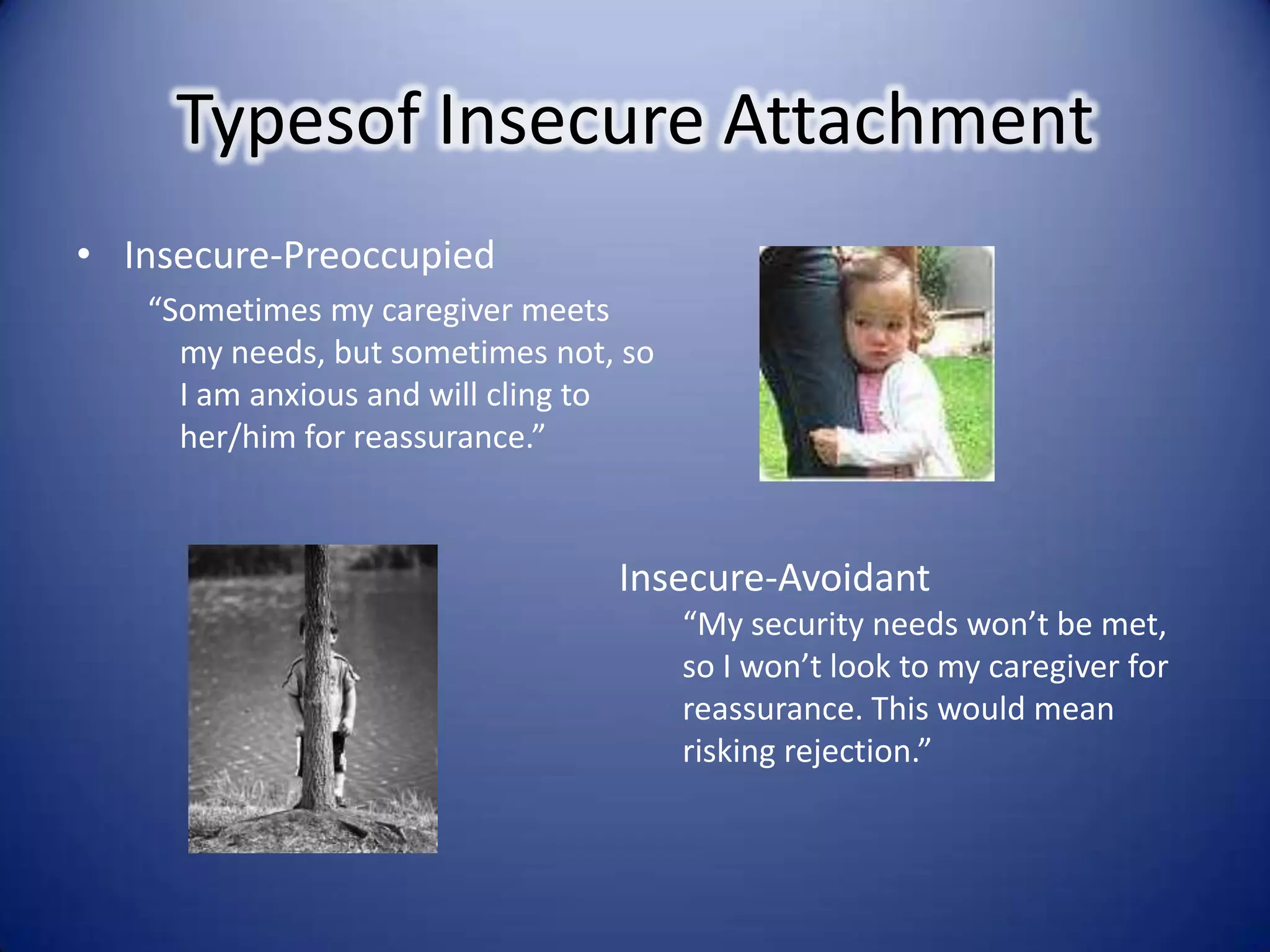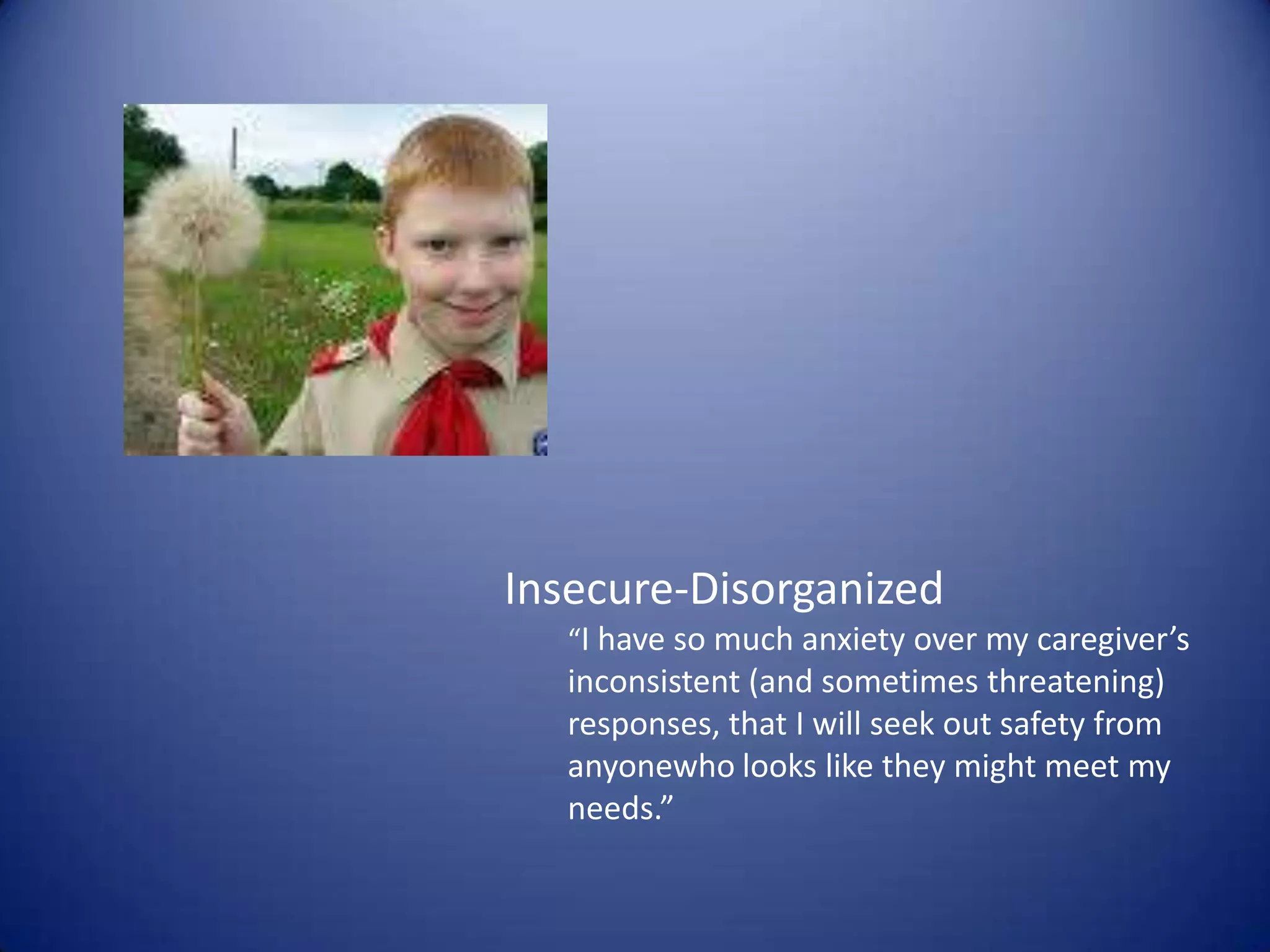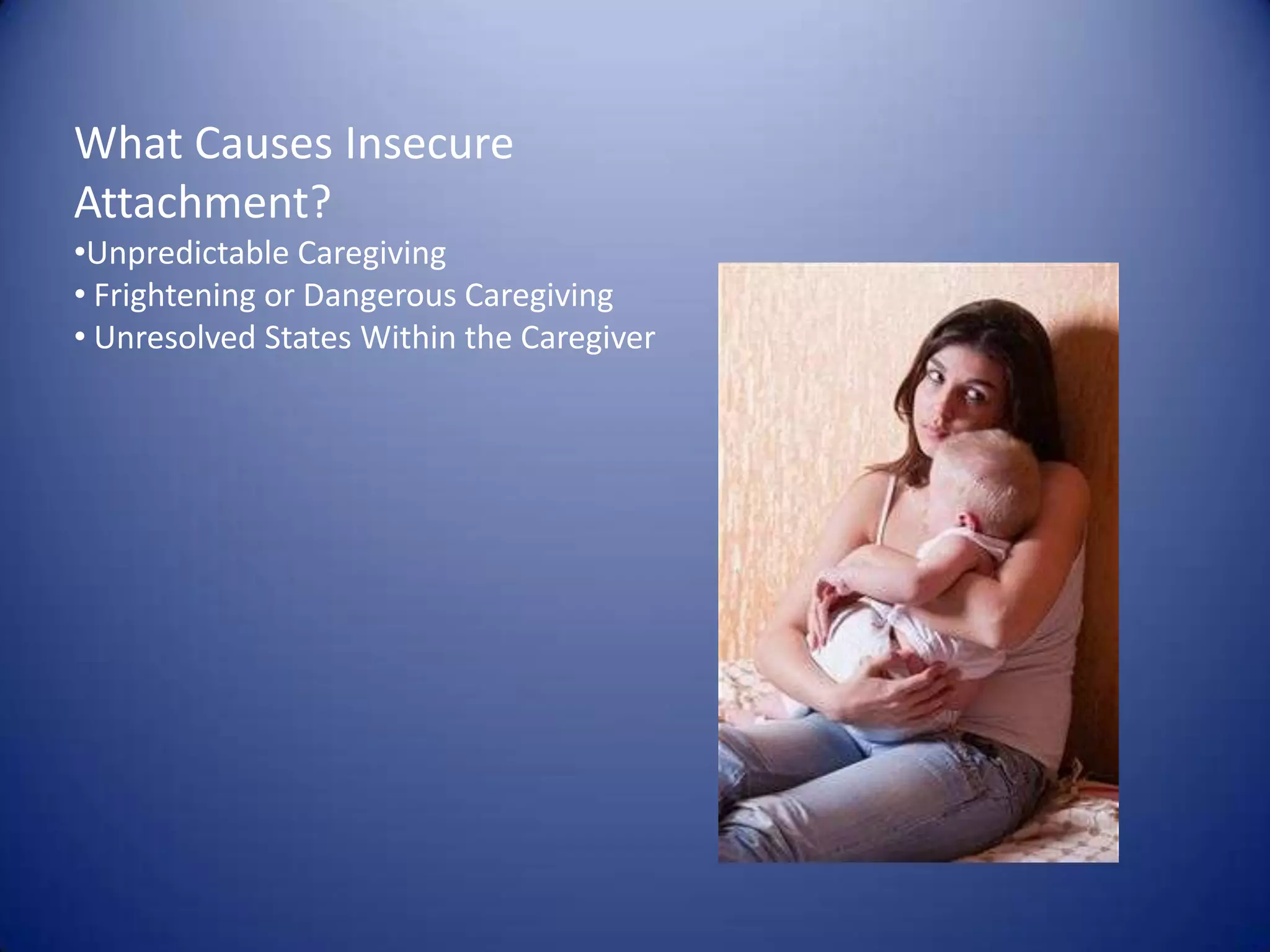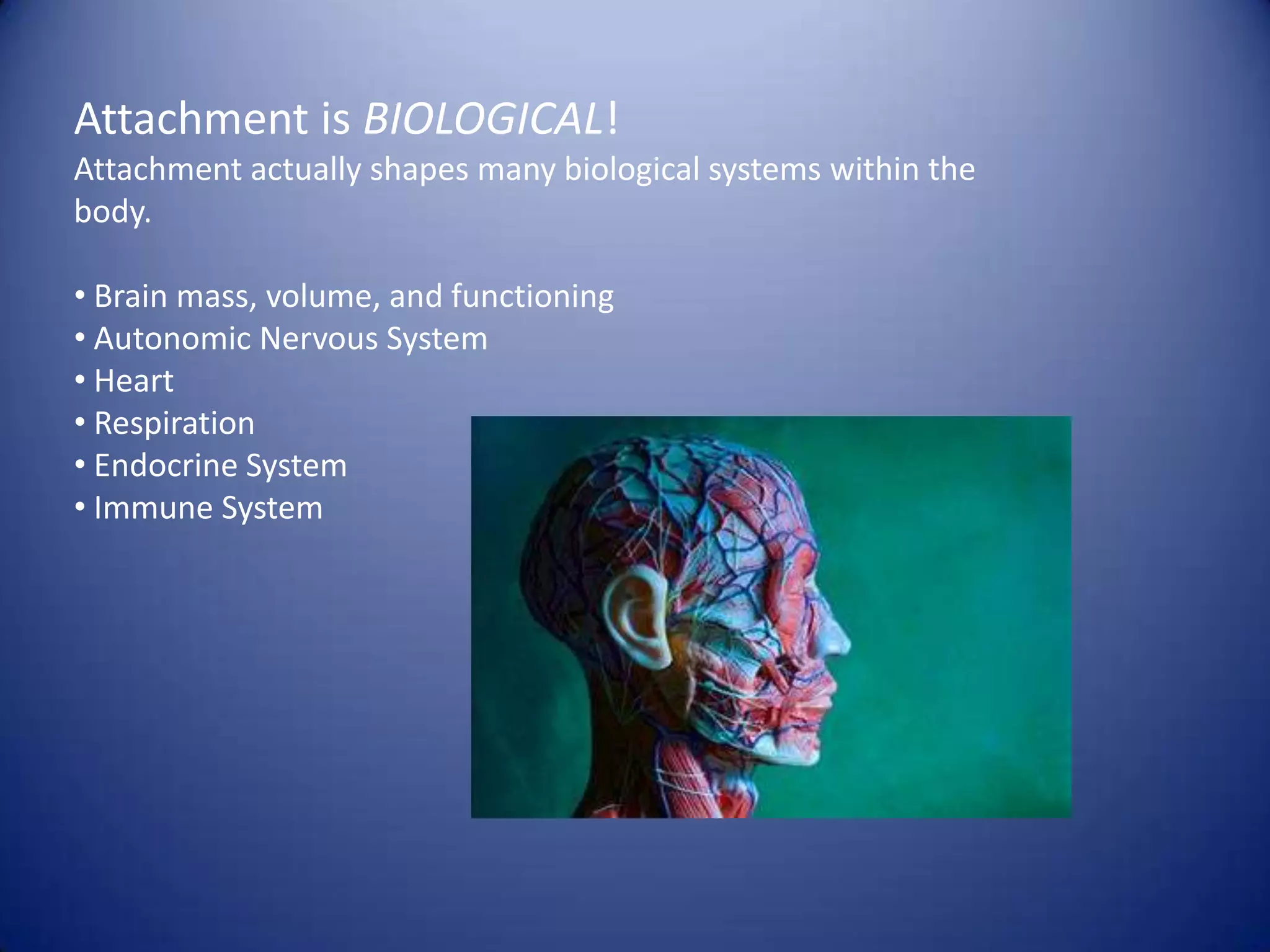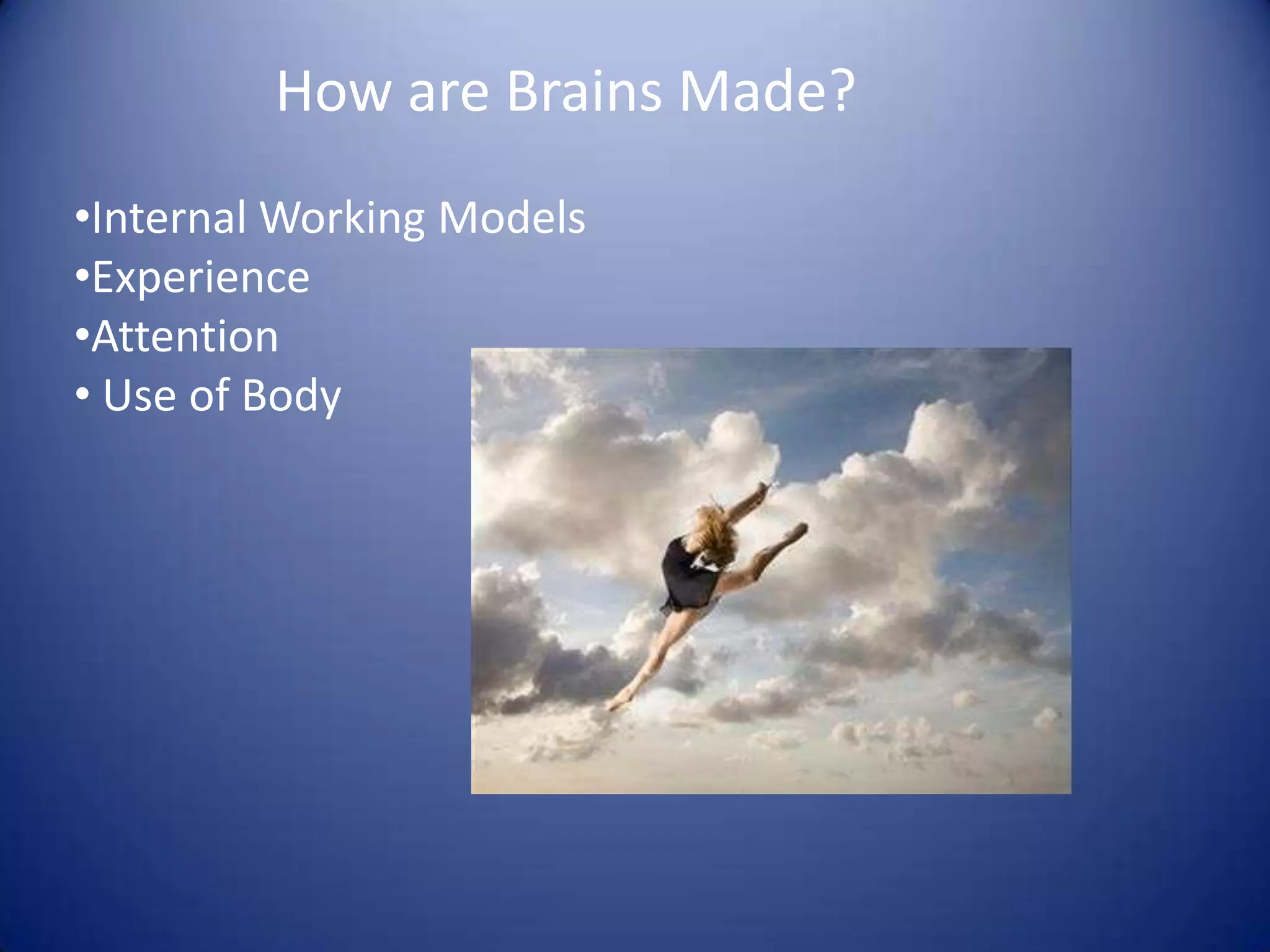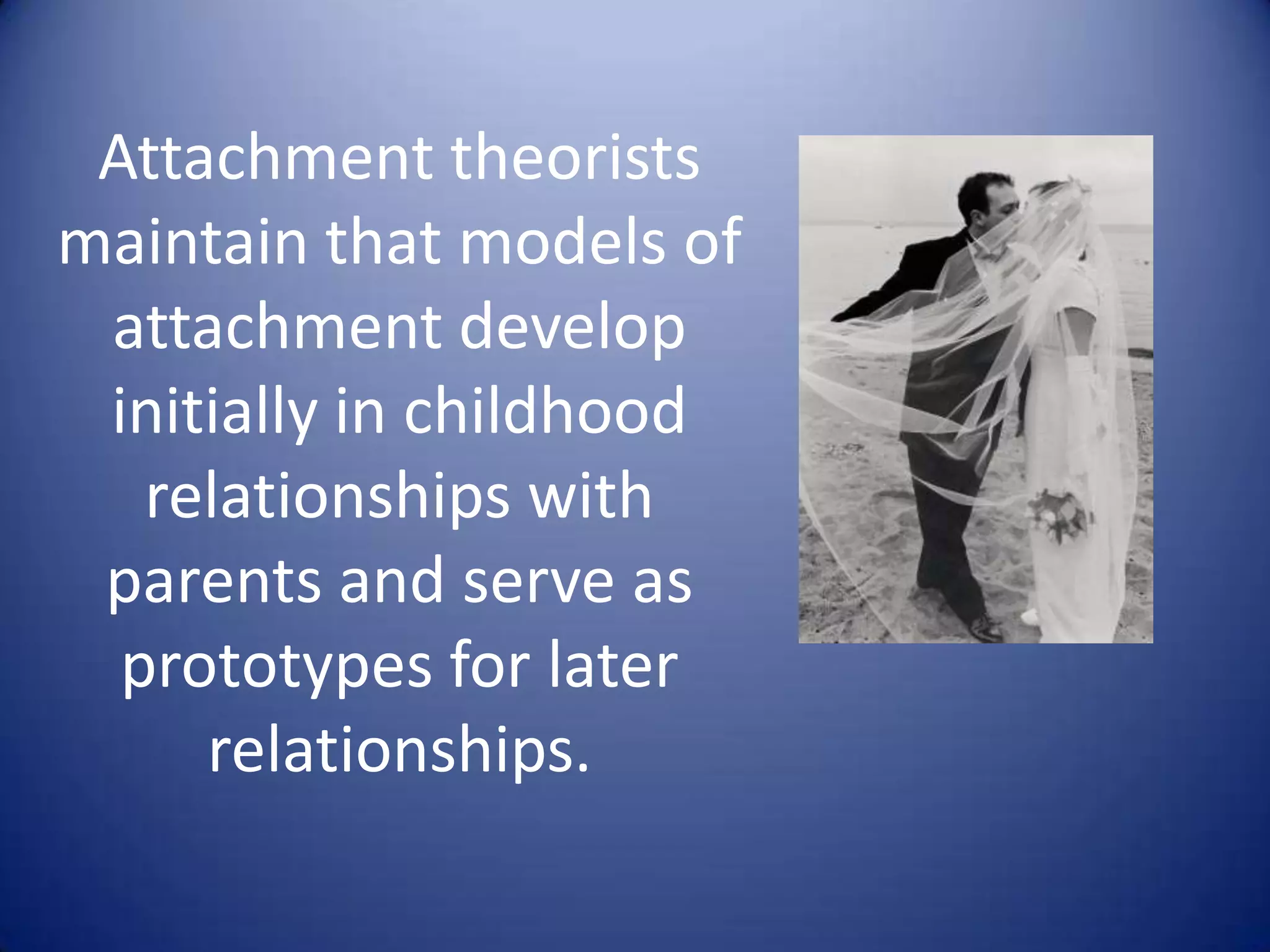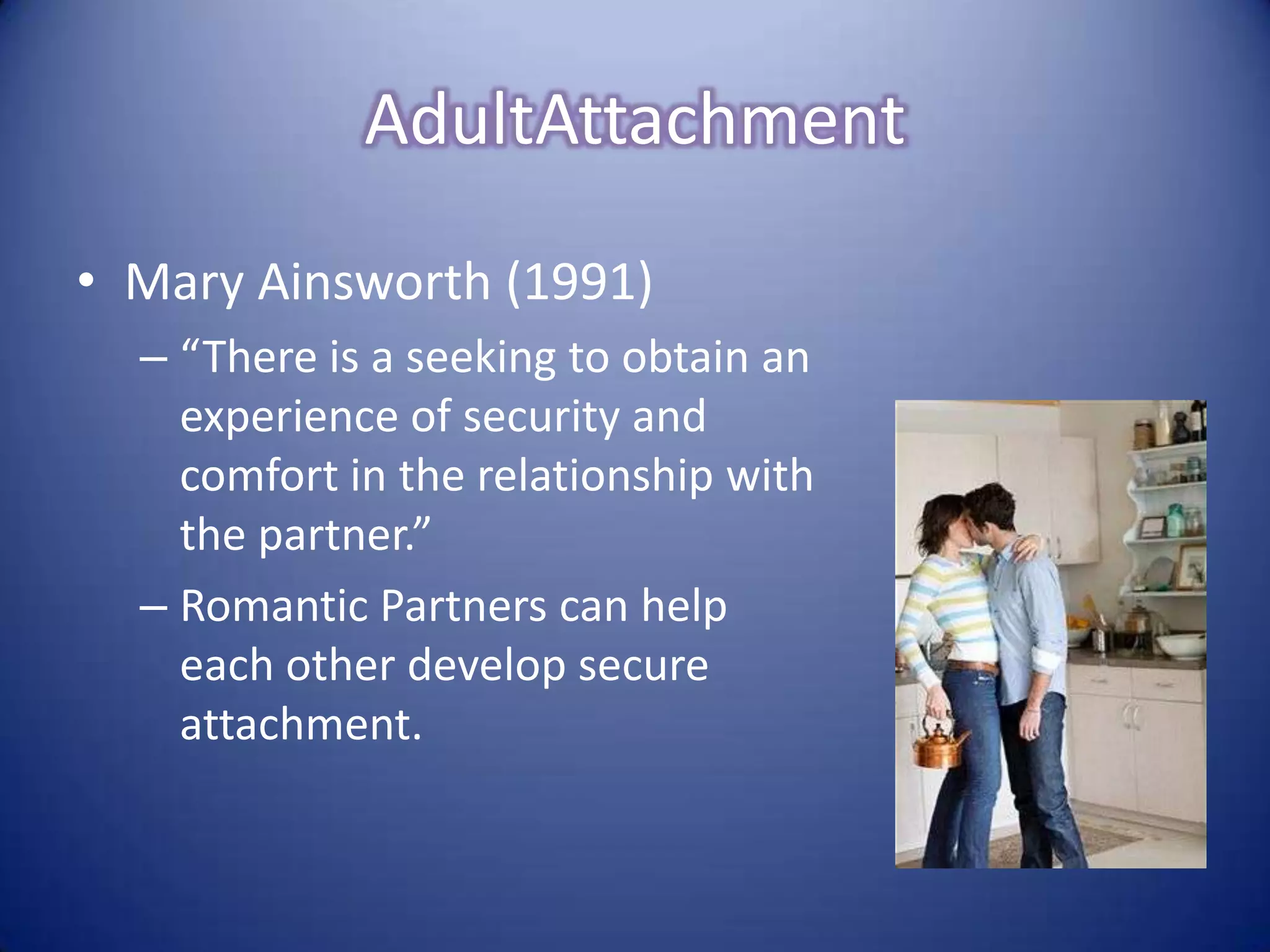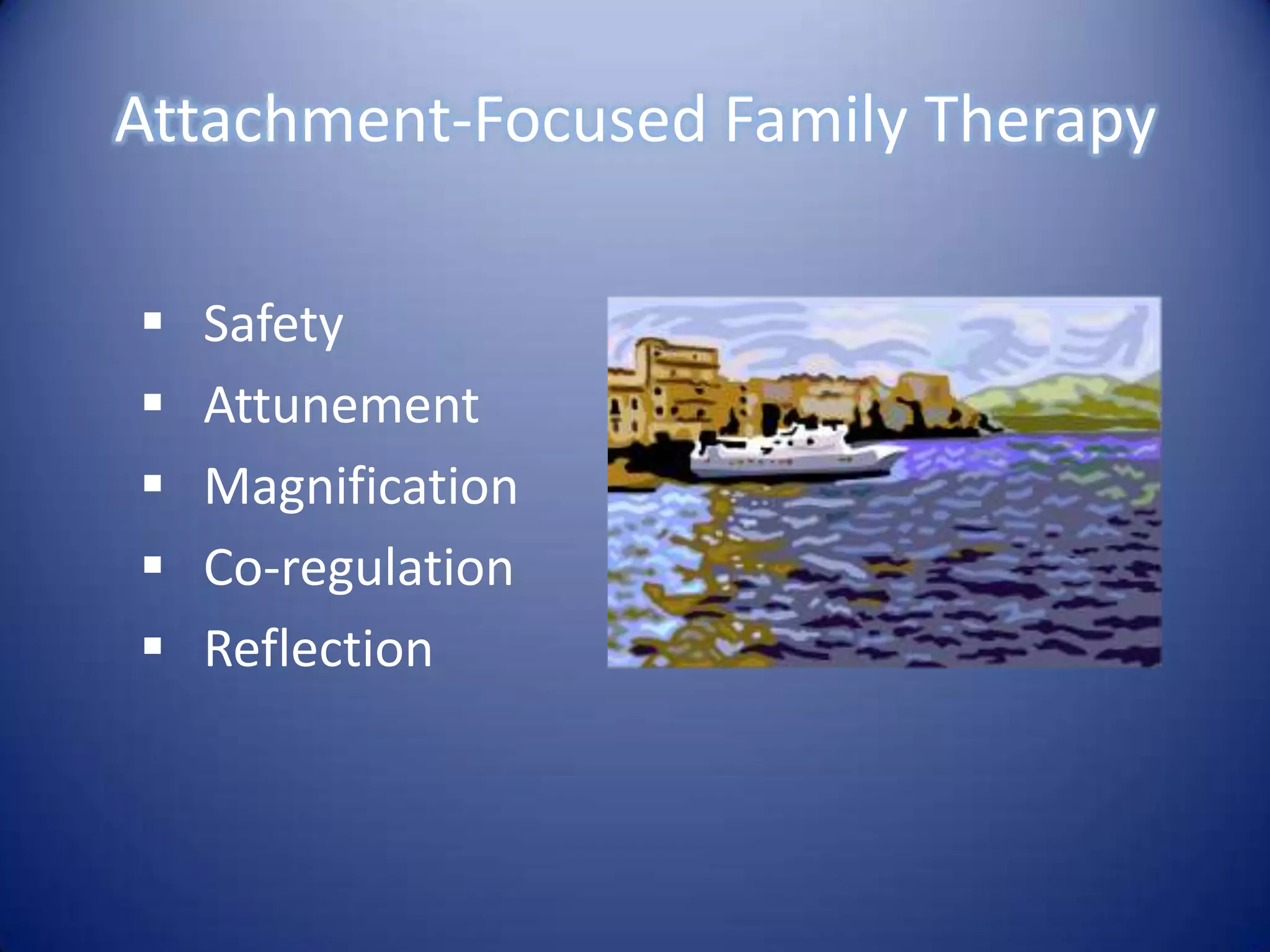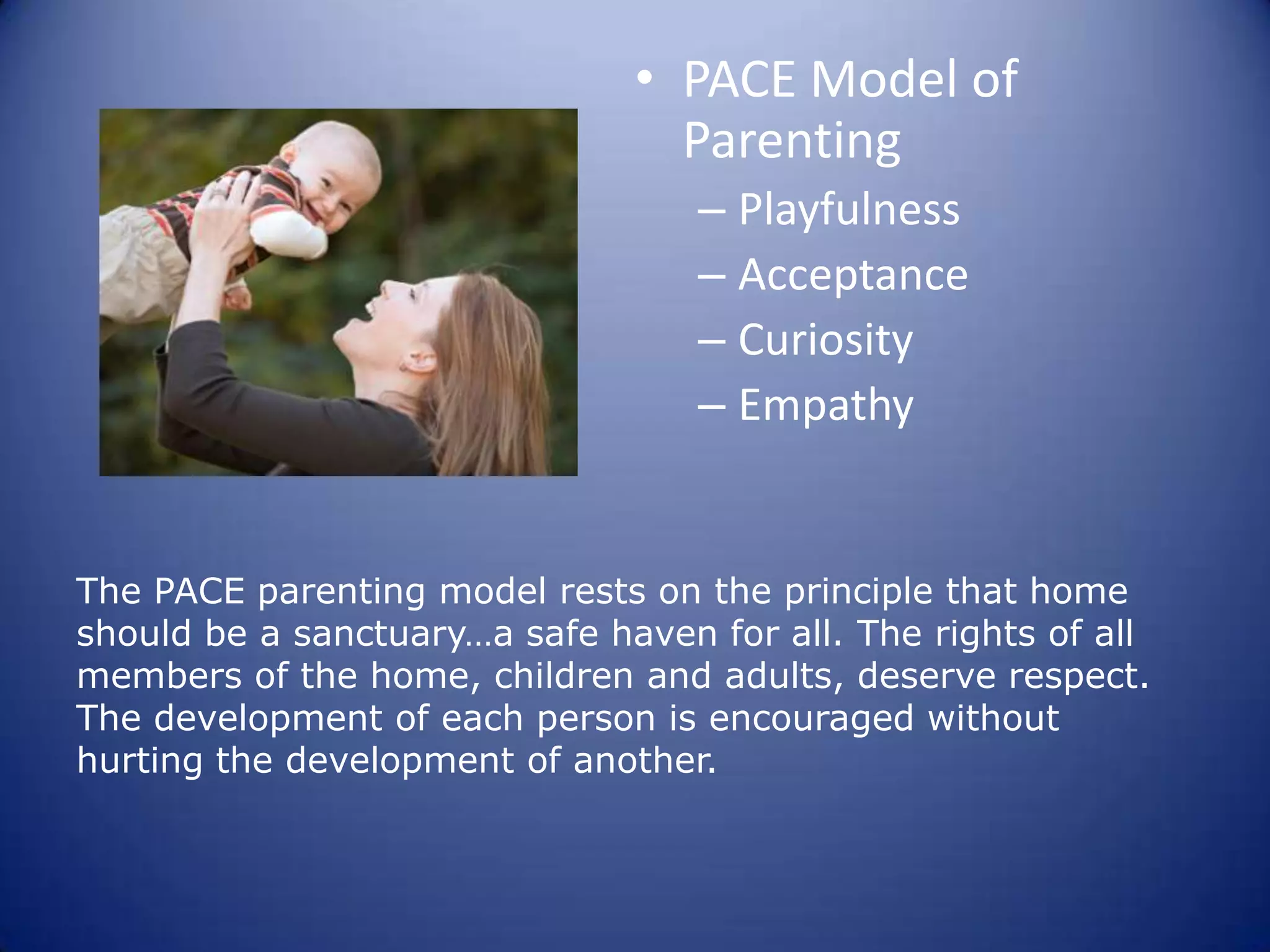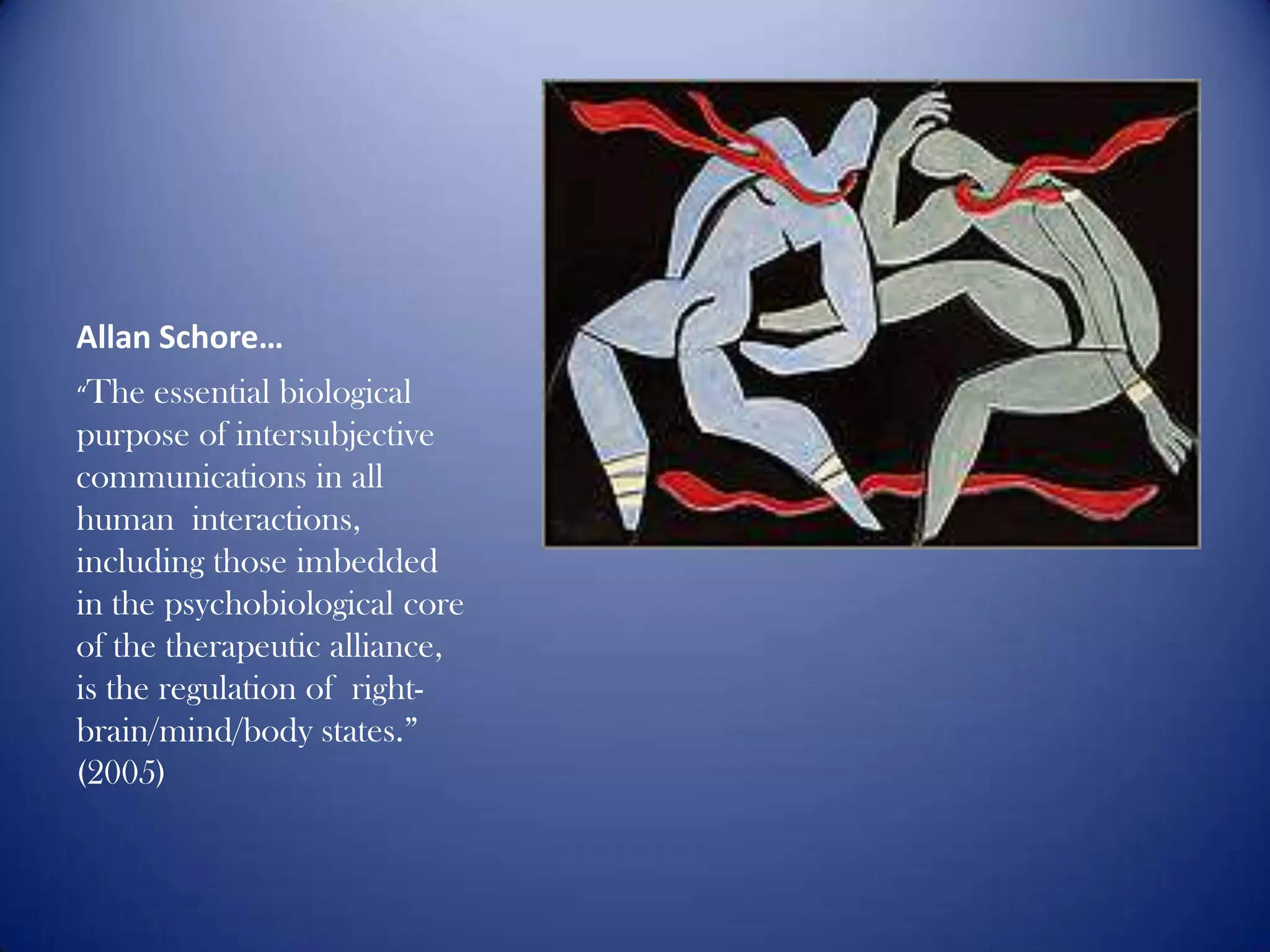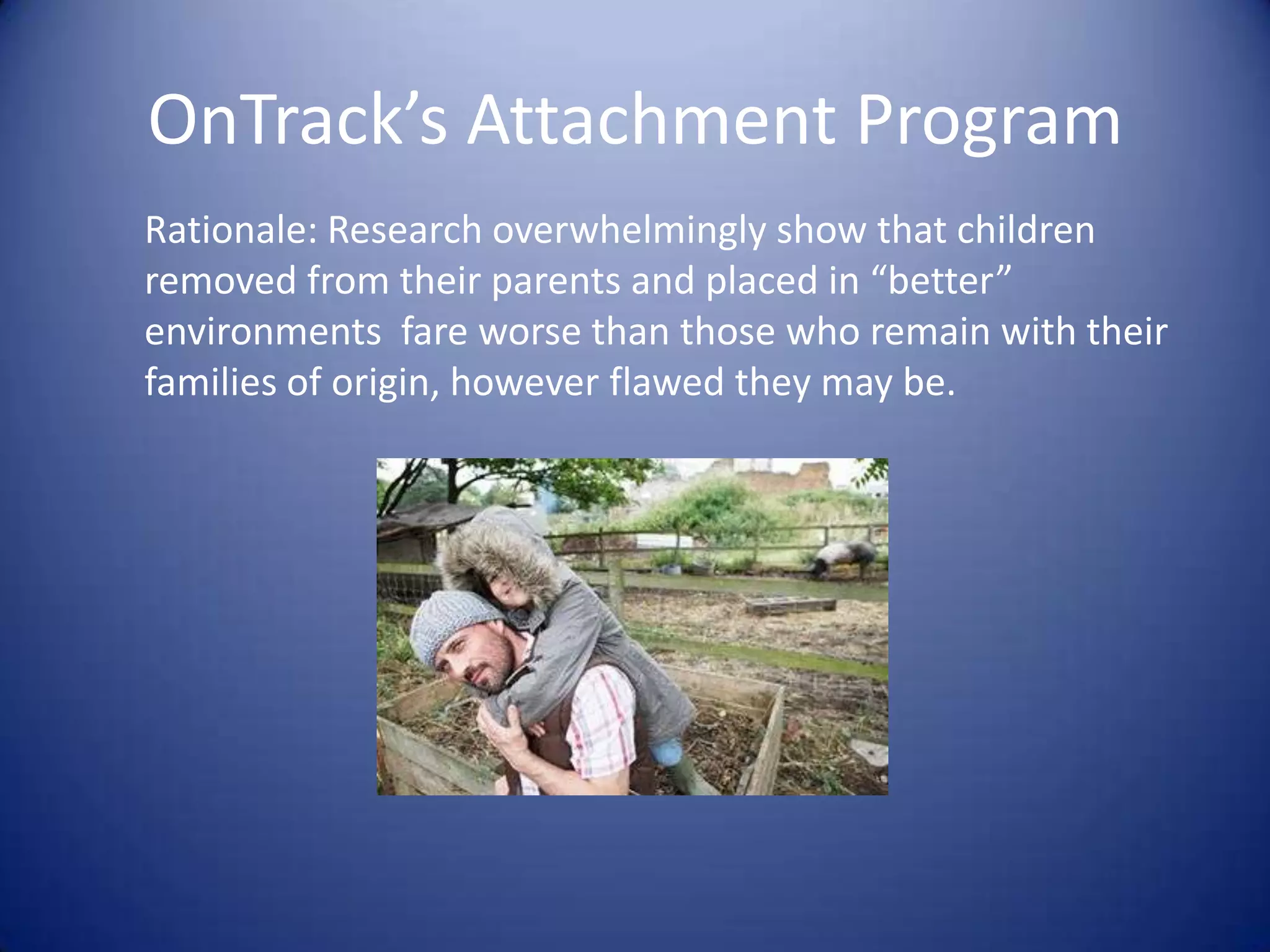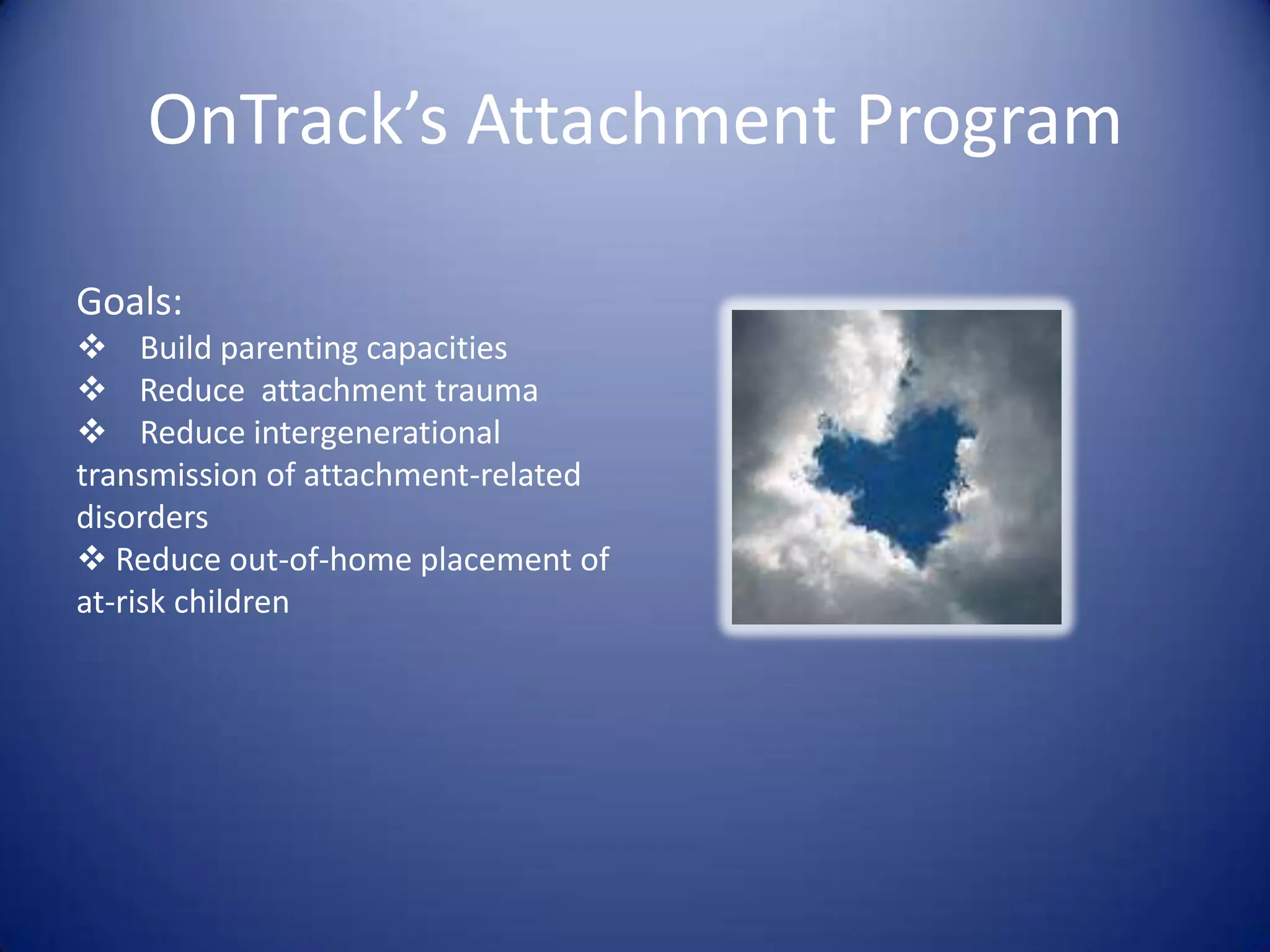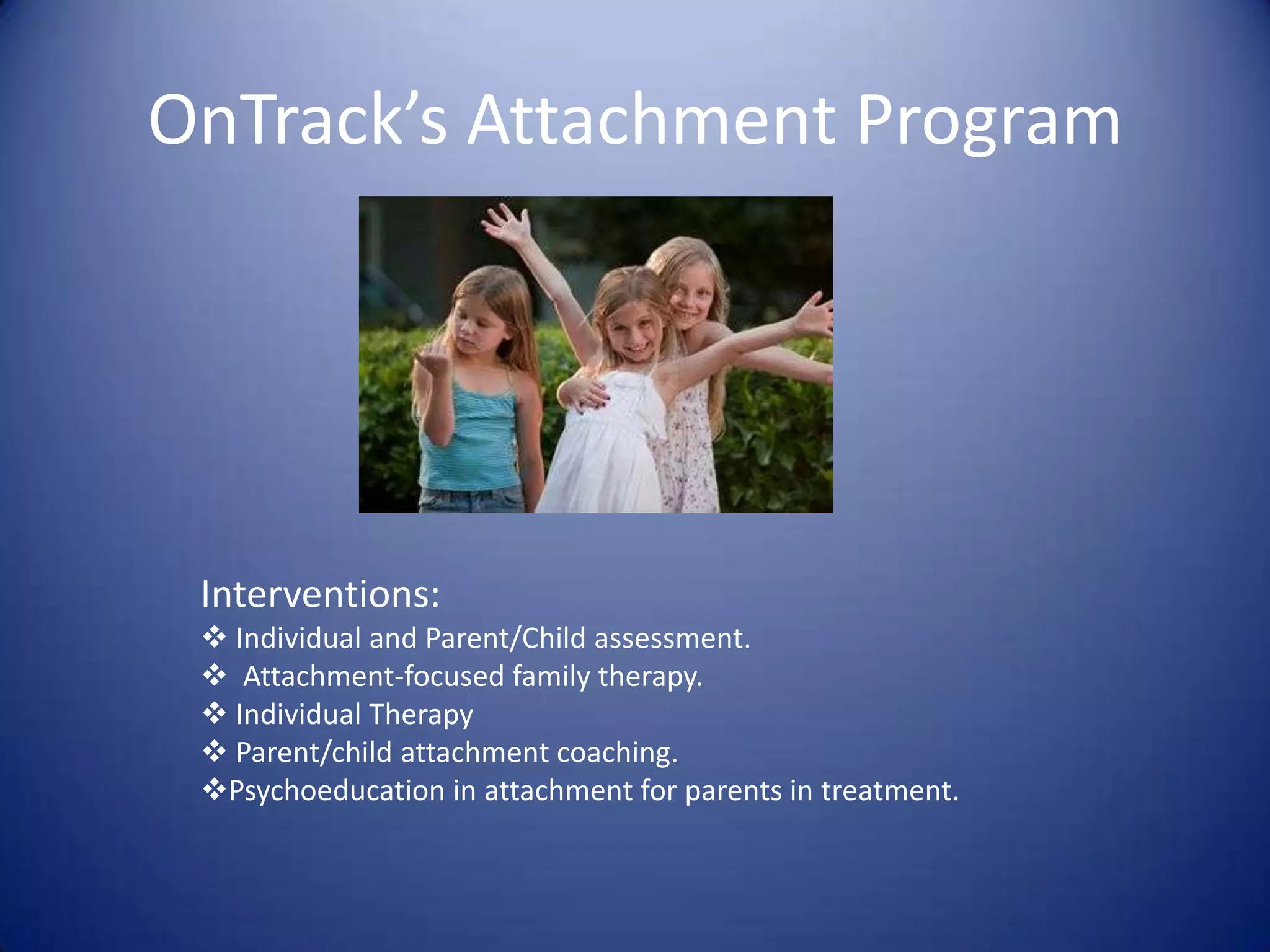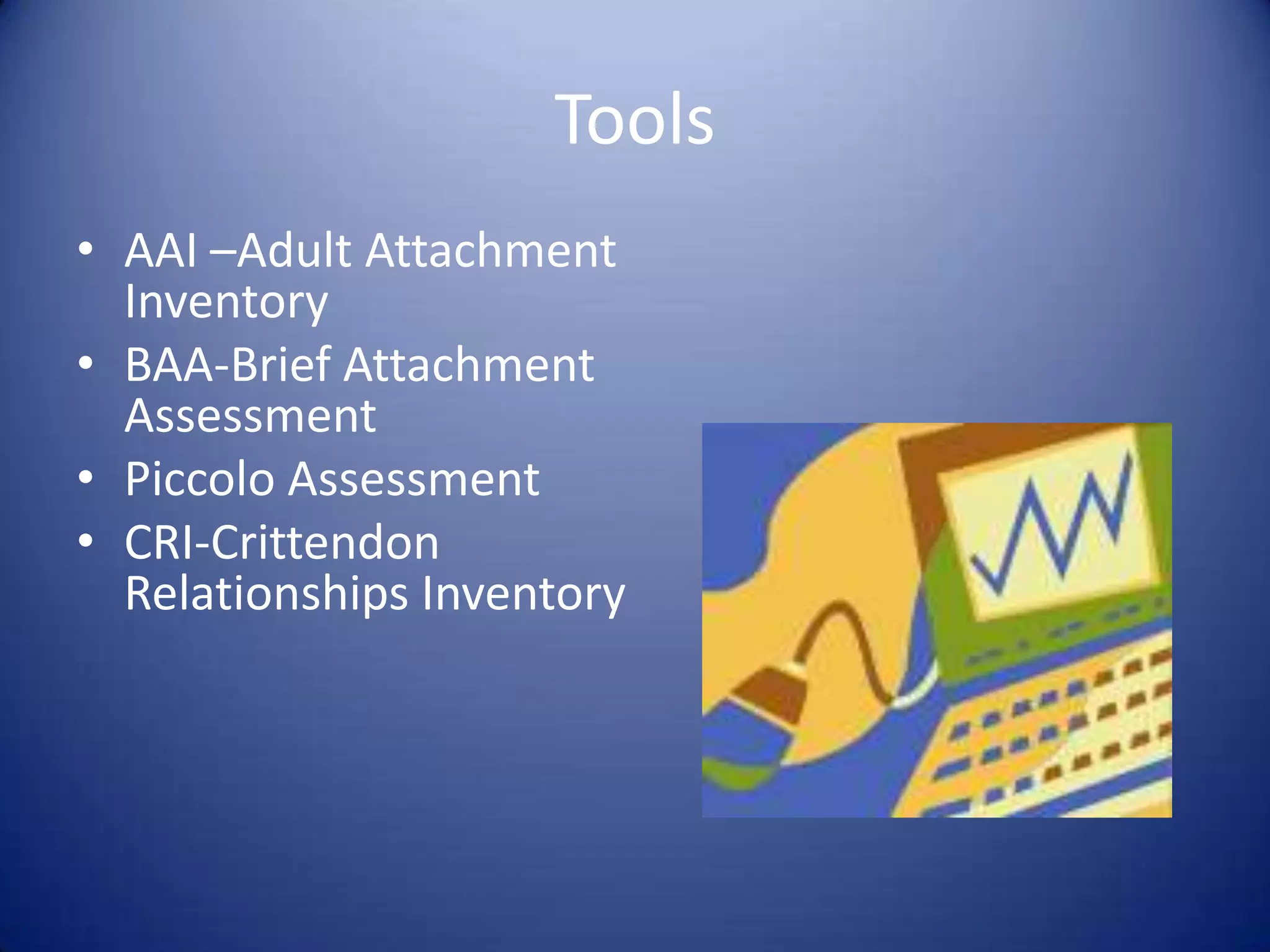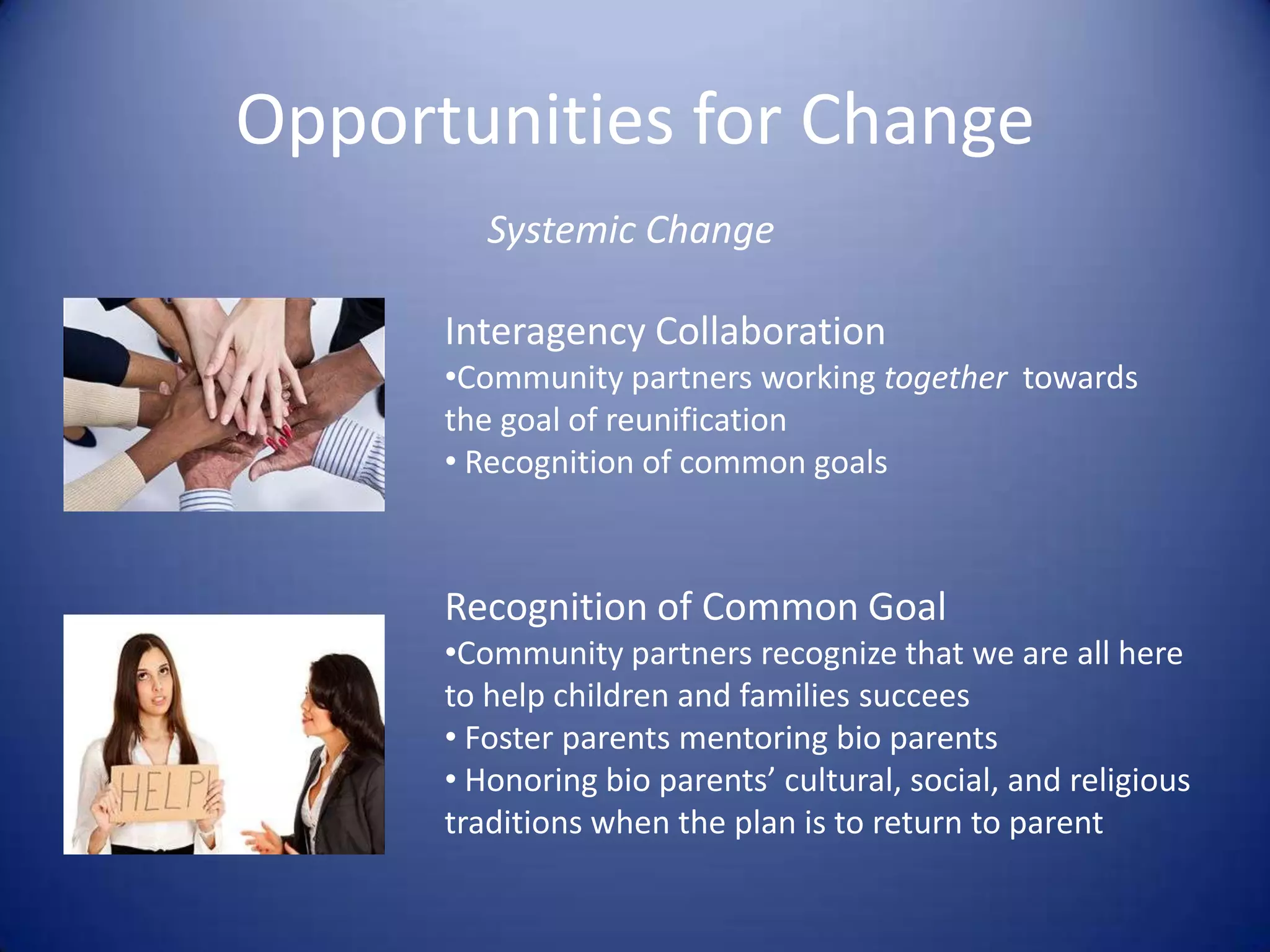This document discusses attachment theory and its implications for therapy. It introduces John Bowlby and Mary Ainsworth's work identifying secure, insecure-preoccupied, insecure-avoidant, and insecure-disorganized attachment styles in infants based on their interactions with caregivers. Insecure attachment can stem from unpredictable, frightening, or dangerous caregiving or unresolved caregiver states. Attachment shapes biological systems in the body. Internal working models develop from early relationships. Adult romantic relationships and attachment-focused therapy can help develop secure attachment. The document then describes OnTrack's attachment-focused program which aims to build parenting capacity and reduce intergenerational trauma through assessment, therapy, and parenting coaching to reduce out-of-home placements.
